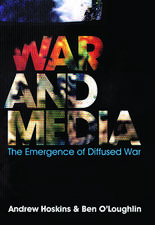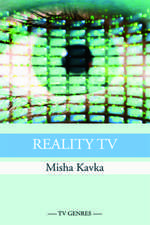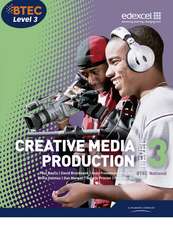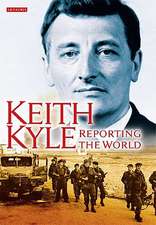Children and the Media
Autor Everette E. Dennisen Limba Engleză Hardback – 3 ian 2018
| Toate formatele și edițiile | Preț | Express |
|---|---|---|
| Paperback (1) | 278.46 lei 6-8 săpt. | |
| Taylor & Francis – 30 ian 1996 | 278.46 lei 6-8 săpt. | |
| Hardback (1) | 669.94 lei 6-8 săpt. | |
| Taylor & Francis – 3 ian 2018 | 669.94 lei 6-8 săpt. |
Preț: 669.94 lei
Preț vechi: 788.16 lei
-15% Nou
Puncte Express: 1005
Preț estimativ în valută:
128.19€ • 134.20$ • 106.07£
128.19€ • 134.20$ • 106.07£
Carte tipărită la comandă
Livrare economică 05-19 aprilie
Preluare comenzi: 021 569.72.76
Specificații
ISBN-13: 9781138520394
ISBN-10: 113852039X
Pagini: 224
Dimensiuni: 152 x 229 x 14 mm
Greutate: 0.45 kg
Ediția:1
Editura: Taylor & Francis
Colecția Routledge
Locul publicării:Oxford, United Kingdom
ISBN-10: 113852039X
Pagini: 224
Dimensiuni: 152 x 229 x 14 mm
Greutate: 0.45 kg
Ediția:1
Editura: Taylor & Francis
Colecția Routledge
Locul publicării:Oxford, United Kingdom
Cuprins
Preface Introduction Part I Overview 1. Symposium I Jana Eisenberg In the first of four "symposia" of short observations on the intersection of children and media compiled by New York free-lancer Jana Eisenberg, six preeminent commentators share their thoughts: U.S. Secretary of Education Richard W. Riley, Vivian Horner of Bell Atlantic, Ernest Boyer of the Carnegie Foundation, Sen. Paul Simon of Illinois and entertainers Shari Lewis and Art Linkletter. 2. The Moment of Truth Reed Hundt Who better to reflect on the future of children and the media than the chairman of the Federal Communications Commission? "Why focus on connecting our children to the potential of the communications revolution?" he asks in outlining his goals in this area. "Because any concept of a well-ordered society depends on raising our children to participate in public discourse, and that discourse will increasingly be through electronic means." 3. "As I Told the FCC . . ." Yet Another Modest Proposal for Children's Television Peggy Charren After a quarter-century, the founder of Action for Children's Television is anything but shy about telling the FCC what's wrong with commercial broadcasting for children. "The record of those 25 years shows that in large part, commercial television has abdicated its educational responsibility and concentrated on its ability to amuse," she says. "Part of the reason we keep having this discussion is that the commercial TV industry does not know how-or does not care-to obey the law." 4. Why Kids Hate Educational TV Patricia Aufderheide "You don't have to get up early too many Saturday mornings with the kids before you're convinced that there's not much educational and informational programming for children on commercial broadcast television," observes a media researcher and communication professor at the American University in Washington. "And, by and large, what is there isn't very inspiring. What was Newton Minow's line? The Vast Wasteland is perhaps vastest on Saturday mornings." 5. Electronic Childhood Ellen Wartella "My children are living an electronic childhood," writes the dean of the College of Communication at the University of Texas-Austin. "As parents, teachers and television producers observe our children in this electronic world, we are both awed by their agility with media that sometimes intimidate us and fearful of the ways those new media are changing the nature of children's lives and the society in which they grow up." Part II Covering Children 6. Symposium II Jana Eisenberg Opening this section are reflections from six more commentators with vast experience writing, researching, entertaining and thinking about kids: author and journalist Alex Kotlowitz, Harvard scholar Gerald Lesser, Linda Ellerbee of "Nick News," kidpaper publisher Adam Linter, children's entertainer Raffi and Columbia University's Samuel Freedman. 7. From Unseen and Unheard to Kidsbeat Cathy Trost "For years, the children's beat was the Rodney Dangerfield of American newsrooms," reflects the director of the Casey Journalism Center for Children and Families at the University of Maryland, "it got no respect." "Covering politics or City Hall was the journalist's dream job, and few wanted to get sidetracked into the low-status, soft-news backwater of kids." But that's changing. 8. How the News Media "See" Kids Dale Kunkel The author, a University of California-Santa Barbara communication professor, reports on his study of how kids are covered by major U.S. newspapers and the network news. The result: a picture of coverage that is uneven and spotty at best. "By serving as gatekeepers of the messages the public receives about the condition of children in American society," he points out, "the press plays a pivotal role in influencing awareness of child-related issues." 9. Children Like Me-Where Do We Fit In? Maria Elena Gutierrez The author, a child development expert in the Alameda, Calif., elementary schools, worries about how the kids she works with in an increasingly ethnically diverse school system pattern their behavior toward one another. "American television's perception of what is beautiful, desirable, `cool' is not where the U.S. population is heading," she argues. "But we and our children still learn from the images television projects, lessons that conform less and less to the world around us." Part III The Child Audience 10. Symposium III Jana Eisenberg Setting the scene for this section are five more experts with wide experience in kid audiences-Fred Rogers of "Mr. Rogers' Neighborhood," University of California-Berkeley sociologist and media scholar Todd Gitlin, Rep. Patricia Schroeder of Colorado, Craig Neff, managing editor of Sports Illustrated for Kids, and mass communication scholar Jane D. Brown of the University of North Carolina-Chapel Hill. 11. By the Numbers-What Kids Watch Larry McGill "Amidst all the concern about children's exposure to potentially harmful TV, surprisingly little attention has been paid to what kids actually watch," writes The Freedom Forum Media Studies Center's director for research and administration in reporting on his own study of child viewing patterns. "While kids do flock to cartoons, PBS and Nickelodeon, data suggest these sources represent less than half of what kids spend their time watching." 12. Six Myths About Television and Children Milton Chen "A curious mythology has grown up around television and its effects on children," observes the director of the Center for Education and Lifelong Learning at KQED in San Francisco, as he sets about debunking those myths. "Together, they would have us believe that TV is single-handedly turning kids into couch potatoes, frying their brains, shortening their attention spans and lowering their academic abilities." This is much too simplistic of you, he argues. 13. "Ask Beth" Elizabeth C. Winship "Kids used to write me about acne, bras, long hair (boys'), short hair (girls'), nylons, tube tops, `Mom makes me come home at 9:30!' and `Should I kiss a boy on the first date?'" reminisces the author of a syndicated column since 1963. Times have changed for kids and how they use her newspaper-mediated advice. "Now they write me about venereal warts and condoms and suicide and drug addiction." 14. "Sesame Street" and Children in Poverty Keith W. Mielke Since the late 1960s, Big Bird, Bert and Ernie, Oscar the Grouch and the rest of the residents of "Sesame Street" have been using TV to teach kids-especially those who need it most, observes the author, senior researcher at the Children's Television Workshop. "`Sesame Street' is reaching and helping low-income children who have a narrower range of educational opportunities in the critical preschool years-important elements in a national strategy for reaching our educational goals for the year 2000," he suggests. 15. Teaching Media Literacy-Yo! Are You Hip to This? Renee Hobbs "Me
Descriere
Throughout history the media has primarily been produced by adults, for adults, about adults. Increasingly, children have become a matter of high priority in the modern media society, and as they have, they have also become the subject of much concern.















